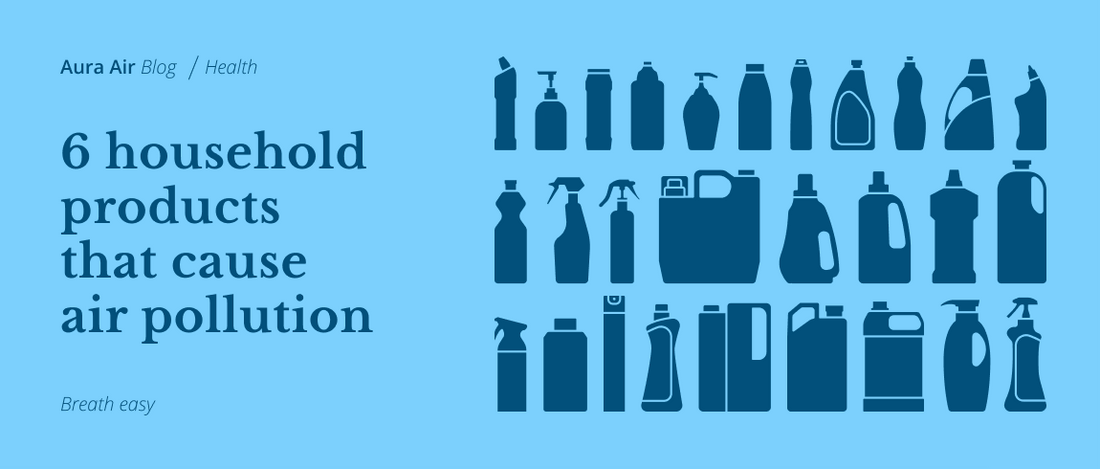While outdoor air pollution is known to many, the truth is we spend 90% of our time indoors - and air pollution doesn't just stop at your window seal. Actually, many of your household items can increase indoor air pollution in your house. What are those items, and which precautions could you take to minimize their effects on your health?
1. Flooring Materials
Today's most popular flooring materials contain and release VOCs, volatile organic compounds, which can cause irritation to multiple organs and the respiratory system. The good news is - nowadays, there are alternatives and a lot of information available nowadays. If possible, try avoiding using artificial flooring materials (laminate, linoleum, PVC, and more).
Look for labels like "low VOCs" or "VOC free," buy from trusted sources only, and be aware of Urea Formaldehyde (a commonly used glue that has high levels of VOCs). If removing the pollutant source isn't possible, try sealing such exposed surfaces.
2. Gas Stoves, Open Fireplaces, and Candles
Any fuel-burning process produces Carbon Monoxide (CO), an odorless and colorless deadly gas. Open fireplaces, gas stoves, and candles all create different levels of CO. Among its effects, CO pollution can cause flu-like symptoms, dizziness, fatigue, impaired vision, and chest pain in people with heart diseases.
Try to minimize or avoid using candles altogether. If replacing your stove or fireplace isn't possible - ventilate your house regularly, and invest in proper ventilation (like a vent hood) if possible. Either way, make sure to adjust your stove when first installed and test and tune it on a yearly basis.
3. Cleaning Products
Cleaning your home on a regular basis is not only one of the most efficient ways to keep you busy and your house spotless but also essential for keeping dust and pesticides away - and indoor air pollution low. However, it has to be done with the right products: most cleaning agents available on the market today contain harmful chemicals.
Anyway, don't mix any store-bought products! Many of them contain bleach or ammonia, and such a blend forms deadly gases.
First, read the labels of the products you buy carefully - and use them according to the manufacturer's directions only. Additionally, there are many natural alternatives available for such products, but when in doubt, sticking to the good old homemade mixture of white vinegar and baking soda is always a good solution.
4. Home Office Equipment
Many of us are still working from home - but did you know that your home office machinery was most likely a contributing factor to your indoor air pollution? As a matter of fact, printers and copiers release toxic gases like Nitrogen Dioxide, Ozone, and VOCs, which can cause headaches, fatigue, allergic reactions, and more.
Although such hardware is an essential part of any (home) office, there are a few things you could do: First, as always, ventilate your workspace regularly, and second, try keeping the machines as far away from you and reduce your contact with them to the necessary minimum.
5. Hand Sanitizers and Disinfectant Wipes
In the past year, we've been all reintroduced to the importance of keeping a high level of personal hygiene. Subsequently, the hand sanitizers and disinfectant wipes industry had a surge in sales of 385.3% last March in the U.S, compared with the same period in 2019. However, such products emit multiple VOCs, and therefore, are hazardous.
Multiple studies showed that using soap is just as good at keeping germs and viruses away and is much safer for you. Even though such products became household names, try reducing your use of them to only when there's no other choice.

6. Cheap Air Purifiers and Air Fresheners
It's a common misconception, but cheap air purifiers and air fresheners can actually cause more harm than good. In fact, air fresheners emit a combination of harmful VOCs, mostly thanks to their scent composition. The fact that air purifiers have the word "pure" in them doesn't mean that they necessarily perform as promised: most cheap purifiers don't catch VOCs and other pollutants and also generate high levels of ozone, which triggers many health problems that you might have wished to solve in the first place.
If you'd like to purchase an air purifier, choose wisely. Read and compare different models and brands that can present a scientifically-proven, consistent result and have multiple certifications from established institutes. A little hint - look for a high-quality air purifier that can remove more than 99% of the harmful particles inside your house.
Aura Air is the world's most advanced air filtration and purification system. By removing more than 99.98% of harmful airborne particles, our science-based technology has succeeded in eliminating even the most stubborn particles and viruses - including COVID-19. To learn more about how you can get the peace of mind and the clean air you deserve, click here.



